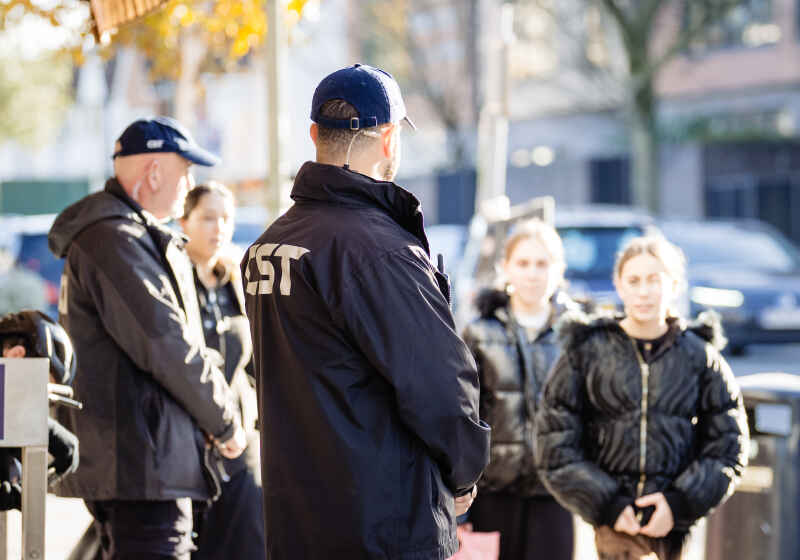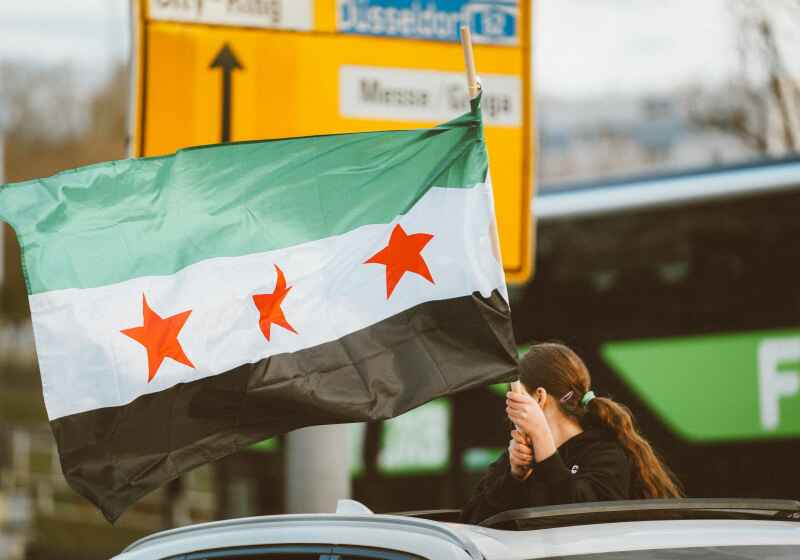CST Blog
Ten Jewish women who fought antisemitism and saved Jewish lives
6 February 2018
Today marks the 100 year anniversary of women over 30 being the giving the right to vote for the first time. The Representation of the People Act, which became law on 6 February 1918, was partial but furthered the ongoing fight for gender equality. In honour of this day, and in celebration of the work women have done to achieve equality, CST commemorates ten, out of many, Jewish women whose heroism, in fighting against antisemitism and prejudice from the biblical age until the World War II, should be celebrated.
Shifra and Puah (Biblical era)
Known as the Hebrew midwives, Shifra and Puah were some of the first Jewish women to help save Jewish lives. The Jews were enslaved by Pharaoh at the time, and the Pharaoh, worried about the possibility of a Jewish man overthrowing him, ordered the midwives to kill all Jewish baby boys that were born. The midwives disobeyed the Pharaoh and claimed Jewish women were giving birth before they arrived to deliver them, therefore saving numerous Jewish baby boys.
Queen Esther (492 BC – Unknown)
Born during the Achaemenid Empire in Persia, Queen Esther, a Jew, married King Ahasuerus (identified as Xerxes I). Haman the Agagite, who had the ear of the King, asked the King to exterminate all the Jews in the Empire. The king agreed to Haman’s request, and Esther’s father, Mordechai, warned of the impending danger. At great risk to herself, without being summoned, Esther approached the king and organised a banquet, which Haman would be invited to. At a second banquet, Esther revealed she was a Jew and told of Haman’s plot to murder the Jewish population. The king ordered Haman to be hung and issued a decree for the Jews to be able to protect themselves from harm.
Henrietta Szold (1860 – 1945)
Born in Baltimore, Maryland, Szold established schools for Russian Jewish immigrants to help them learn English. She later moved to Palestine and set up Hadassah, a women’s Zionist organisation. She encouraged the World Zionist Organisation to take on the responsibility of a Youth Aliyah programme to help Jewish children from Germany escape to Palestine on the eve of the Holocaust, in 1933.
Sarah Aaronsohn (1890 – 1917)
Born in what was then Ottoman Syria, Aaronsohn witnessed part of the Armenian genocide following a trip from Istanbul to Haifa during World War I. She witnessed a massacre of Armenians by the Ottomans and recalled seeing hundreds of bodies of men, women and children. Aaronsohn, horrified by the actions of the Ottomans, decided to side with the British Allied forces. She realised this fate could befall the Jews living in Palestine at the time and begun to pass intelligence onto the British through her Nili spy ring, until she was intercepted in 1917 and committed suicide.
Hannah Szenes (1921 – 1944)
Born in Hungary, Szenes was a Special Operations Executive paratrooper and was one of 37 Jewish parachutists during World War II to assist in the rescue of Hungarian Jews who were about to be deported to the Nazi concentration camp, Auschwitz.
Anne Frank (1929 – 1945)
Born in Germany, Frank is one of the most discussed and influential Jewish victims of the Holocaust. The Diary of Anne Frank has become one of the most famous books in the world. This powerful account of a Jewish teenage girl’s life hiding in a warehouse attic in Nazi-occupied Amsterdam is far-reaching among all ages and has opened the minds of people regarding prejudice and our shared responsibility for humanity and human rights.
Vitka Kempner (1920-2012)
Born in Poland, Kempner was a founding member of the “Avengers,” one of the most notable and successful all-Jewish partisan groups during the war. Having witnessed the brutality of the Nazis, Kempner felt determined to fight back. In 1942, Kempner was one of the founding members of the United Partisan Organisation, which was directed towards the singular goal of armed resistance. Kempner is said to have carried out the first ever act of sabotage, blowing up a Nazi train, by a woman in Eastern Europe. As well as fighting against the Nazis, Kempner reached out to survivors and helped smuggle hundreds of European Jews into British-occupied Palestine.
Faye Schulman (Born 1919)
Born in Poland, Schulman fought to ensure that what happened to Jewish people during the Holocaust would never be forgotten by capturing the Jewish resistance. In 1942, Schulman’s family, along with over 1850 people in the Lenin ghetto, were murdered by the Nazis. Schulman was spared only because the Nazis valued her photographic skills and so ordered her to document their devastation. Upon taking a photograph of a mass grave and recognising the deceased bodies of her family, Schulman felt impelled to join the resistance and to record their fight against the Nazis. Schulman escaped from the Nazis and fled to the forests where she joined the partisan group, the Molotava Brigade. She used this opportunity to capture the Jewish resistance so that the world would know “there was a resistance. Jews did not go like sheep to the slaughter. I have pictures. I have proof.” Schulman is the only known Jewish partisan photographer.
Marthe Cohn (Born 1920)
Born in France, Cohn was selected as a spy for the Allies and sent into Germany to spy on the Nazis. Despite the dangerousness of the task, Cohn gathered military information and helped Allied commanders prepare for German troop movements. Cohn was awarded the Croix de Guerre, a French military decoration given during World War I and World War II.
Sara Fortis (Born 1927)
Born in Greece, Fortis formed an all-female unit of partisans in Greece during the Holocaust, which became indispensable to the male fighters. It was when Fortis escaped from the Nazis as Jews began being deported in 1941, that she decided it was time to become a resistance fighter. Fortis then travelled across Greece recruiting other women who wanted to fight. Despite Fortis and other female resistance fighters’ bravery and accomplishments, the male fighters were given credit for many of the women’s successful missions against the Nazis. At the time, few people believed that women could accomplish such acts. Since, however, these women’s bravery has been recognised and Fortis has become a prominent figure in Jewish resistance.
Read More

Love since 7 October
14 February 2025

Antisemitic Incidents Report 2024
12 February 2025

The Fall of Assad and the Zionist “Evil Plan”
8 January 2025